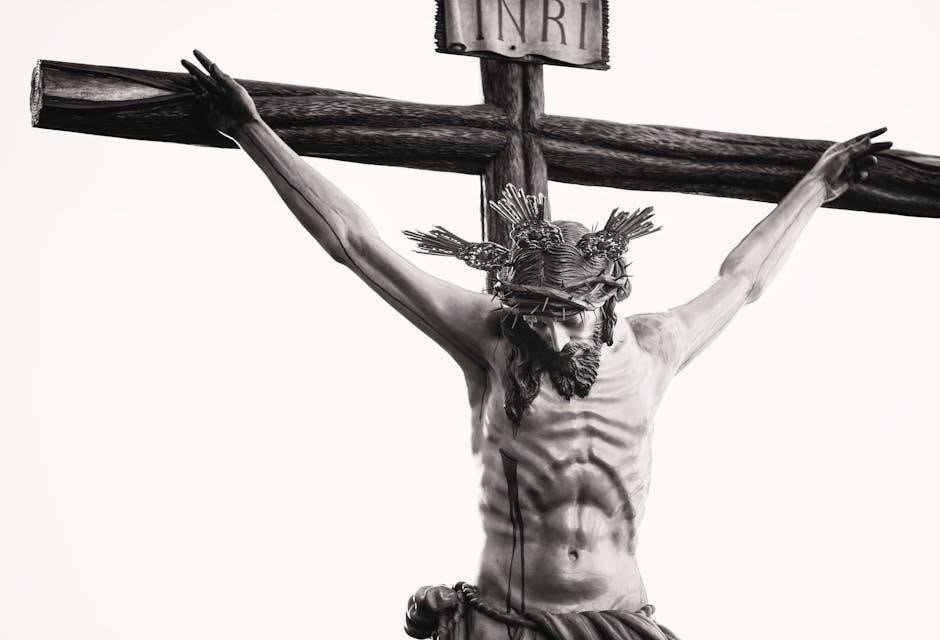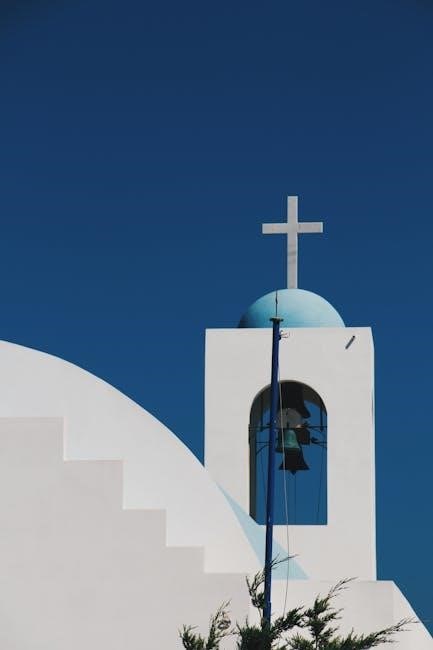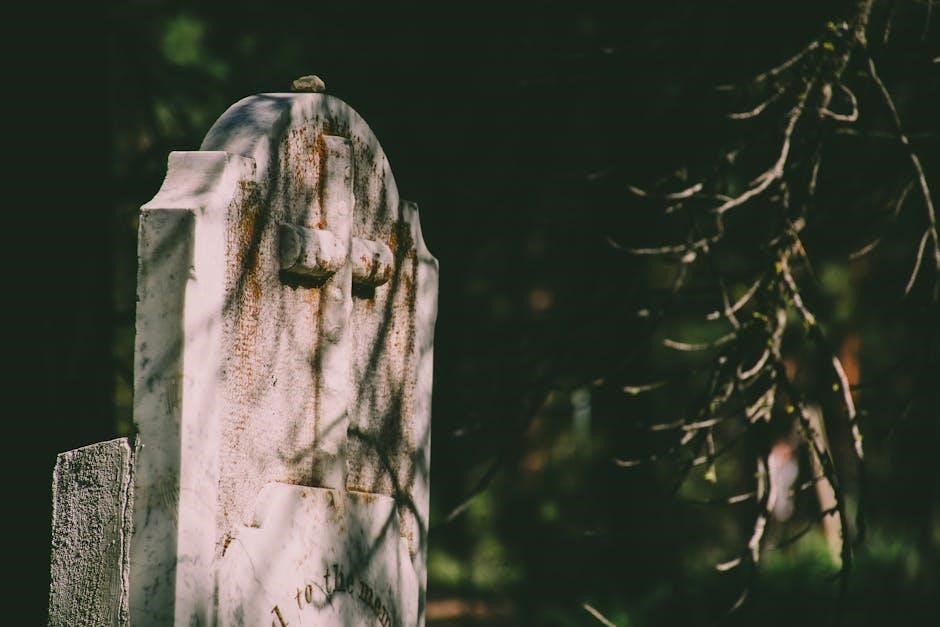Overview of “The Mushroom and the Sacred Cross”
John Marco Allegro’s 1970 book explores the intersection of Christianity and ancient fertility cults, suggesting sacred mushrooms influenced early Christian rituals and symbolism.
The Mushroom and the Sacred Cross by John Marco Allegro is a controversial work that challenges traditional views of Christianity. Published in 1970, it explores the relationship between early Christian rituals, ancient fertility cults, and the use of sacred mushrooms. Allegro argues that Christianity evolved from a shamanistic cult centered on psychoactive fungi, presenting a radical reinterpretation of biblical narratives. His linguistic and historical analysis sparked intense debate, blending philology, ethnography, and pharmacology to propose a revolutionary understanding of religious origins and symbolism.
1.2. Author John Marco Allegro
John Marco Allegro was a British archaeologist, philologist, and Dead Sea Scrolls scholar. Born in 1923, he gained prominence for his work on the Copper Scroll and linguistic analyses. Allegro’s unconventional ideas about the origins of Christianity, as expressed in The Mushroom and the Sacred Cross, led to both acclaim and criticism. His interdisciplinary approach combined biblical studies with ethnopharmacology, offering a unique perspective on early religious practices and their potential connections to psychoactive substances and ancient fertility rituals.
1.3. Main Themes and Controversies
The book delves into the connection between Christianity and ancient fertility cults, suggesting that sacred mushrooms played a central role in early rituals. It challenges traditional views by proposing that Jesus may have been symbolized as a mushroom, linking this to linguistic and symbolic evidence. These ideas sparked intense debate, with critics accusing Allegro of speculative interpretations, while others praised his innovative approach to religious history and the origins of Christian symbolism.
The Central Argument: Jesus as a Mushroom
Allegro posits that Jesus was symbolized as a sacred mushroom, linking Christian origins to ancient fertility cults and psychedelic rituals, challenging traditional religious narratives.
2.1. Allegro’s Hypothesis
John Marco Allegro proposed that Jesus was not a historical figure but a symbolic representation of the sacred mushroom, specifically the Amanita muscaria. He argued that early Christianity emerged from ancient fertility cults that revered the mushroom as a symbol of divine fertility and spiritual transformation. Allegro’s hypothesis, rooted in philological analysis, suggested that the New Testament narratives were allegorical tales encoding the use of psychoactive mushrooms in religious rituals. This theory sparked significant controversy and debate among scholars and the public alike.
2.2. Linguistic Evidence for the Mushroom Theory
Allegro’s linguistic analysis focused on etymological connections between ancient Near Eastern languages and biblical terms. He suggested that words like “Christ” and “cross” had roots in mushroom-related terminology, indicating a hidden symbolism. For example, the Greek word for “mushroom” (γύης) and “Christ” (Χριστός) share phonetic similarities, leading Allegro to propose that early Christian texts encoded references to sacred fungi. This linguistic approach aimed to link biblical narratives with fertility cult practices, further supporting his controversial hypothesis.
2.3. Criticisms of the Mushroom Hypothesis
Allegro’s mushroom hypothesis has faced significant criticism from scholars, who argue that his linguistic interpretations are speculative and lack concrete evidence. Many experts dismiss his etymological claims as strained and unsupported by historical context. Additionally, the hypothesis is criticized for oversimplifying complex religious and cultural phenomena. The lack of archaeological or textual proof further undermines its credibility, leading most academics to reject it as a fringe theory with limited scholarly acceptance.

The Sacred Mushroom in Ancient Cultures
Sacred mushrooms were revered in ancient cultures for their symbolic and ritualistic significance, often linking them to fertility, spirituality, and divine connection in religious practices.
3.1. Use of Sacred Mushrooms in Rituals
Sacred mushrooms were integral to ancient rituals, often used in shamanic ceremonies to induce altered states of consciousness, fostering spiritual connection and divine communication. These fungi were believed to bridge the earthly and spiritual realms, enabling participants to access deeper insights and mystical experiences. Rituals frequently involved controlled consumption of psychoactive mushrooms, such as psilocybin species, to facilitate healing, prophecy, and communal bonding. Their ceremonial use was deeply tied to cultural and religious practices, emphasizing transformation and transcendence.
3.2. Symbolism of the Mushroom in Ancient Religions
The mushroom held profound symbolic meaning in ancient religions, often representing rebirth, immortality, and spiritual growth. Its unique life cycle, emerging from decay to new life, mirrored themes of resurrection and divine transformation. In some cultures, mushrooms symbolized cosmic unity and connection to the gods, serving as a bridge between the earthly and celestial realms. Their imagery was woven into rituals, art, and myths, reinforcing their sacred status and mystical significance in religious narratives and practices.
3.3. Connection to Fertility Cults
The mushroom’s association with fertility cults stems from its life cycle, symbolizing rebirth and abundance. Ancient Near Eastern fertility rituals often incorporated sacred plants, including mushrooms, to induce trance states for spiritual communion. These practices, linked to shamanic traditions, emphasized the mushroom’s role in fostering divine connection and ensuring agricultural prosperity. Allegro’s work highlights how such rituals may have influenced early Christian symbolism, blending fertility themes with emerging religious narratives.

The Cross as a Symbol in Christianity
The cross is a central symbol of Christianity, representing Jesus’s sacrifice, redemption, and divine love. It embodies the crucifixion and resurrection, serving as a unifying emblem for believers.
4.1. The Cross in Early Christian Symbolism
The cross emerged as a profound symbol in early Christianity, representing Jesus’s crucifixion and resurrection. It signified redemption, divine love, and the triumph of life over death. Early Christians often depicted the cross discreetly, as a simple “X” or “†,” to avoid persecution. Over time, it evolved into a central icon, adorned in art and worship, becoming a unifying emblem for believers. Its presence in rituals and architecture underscored its spiritual significance, reflecting the core of Christian faith and identity.
4;2. The Cross and the Mushroom: Symbolic Connections
Allegro suggests a symbolic link between the cross and the mushroom, proposing that both represent transformation and renewal. The cross symbolizes Jesus’s sacrifice and resurrection, while the mushroom, with its life cycle of growth and decay, mirrors themes of rebirth. Both icons, in their own contexts, embody spiritual renewal and the connection between the earthly and divine realms, reflecting deep symbolic parallels across cultures and belief systems.
4.3. The Cross in Ancient Near Eastern Cultures
The cross was a pre-Christian symbol in ancient Near Eastern cultures, often representing life, fertility, and divine connection. It appeared in various forms, such as the Egyptian ankh and Mesopotamian motifs, symbolizing the intersection of spiritual and natural realms. Early Christians adopted and reinterpreted this symbol, transforming it into a universal emblem of sacrifice and salvation, deeply rooted in both cultural heritage and religious innovation.
Historical Context of the Book
Published in 1970, Allegro’s book explores early Christianity’s roots in fertility cults, offering controversial theories about sacred mushrooms’ influence on rituals and symbolism.
5.1. Early Christianity and Fertility Cults
Allegro’s work examines the potential overlap between early Christian practices and ancient fertility cults, suggesting that rituals involving sacred mushrooms may have influenced the development of Christianity. He argues that these cults, prevalent in the Near East, used psychoactive substances to induce spiritual experiences, which might have been incorporated into early Christian rites. This theory challenges traditional views of Christianity’s origins, proposing a deeper connection to pre-Christian religious practices.
5.2. The Role of Shamanism in Early Christian Rituals
Allegro’s book suggests that shamanic practices, involving the use of sacred mushrooms, played a significant role in shaping early Christian rituals. He proposes that these substances facilitated mystical experiences, akin to those described in religious texts, thereby influencing the development of Christian sacraments. This perspective draws parallels between shamanistic traditions and early Christian practices, offering a unique lens through which to view the evolution of religious ceremonies and their connection to psychoactive substances.
5.3. The Influence of Ethnopharmacology
Ethnopharmacology, the study of traditional drug use, sheds light on how psychoactive substances like sacred mushrooms may have influenced early Christian rituals. Allegro suggests these substances altered consciousness, fostering spiritual experiences that shaped religious practices. This perspective ties the use of such plants to symbolic and liturgical elements in Christianity, offering a pharmacological basis for mystical encounters described in ancient texts. The interplay of ethnopharmacology and spirituality thus becomes a crucial lens for understanding the book’s central arguments.

The Intersection of Mushrooms and Spirituality
Sacred mushrooms have long been linked to spiritual experiences, facilitating altered states of consciousness and deep connections to the divine across various cultures and rituals.
6.1. Psilocybin Mushrooms and Spiritual Experiences
Psilocybin mushrooms have been used in indigenous ceremonies for centuries, offering altered states of consciousness and spiritual insights. These experiences are believed to connect users to the divine, providing emotional healing and transcendent awareness. Allegro’s work suggests such practices may have influenced early Christian rituals, blurring the line between shamanism and religious tradition, and highlighting the deep symbolism of the mushroom in spiritual contexts.
6.2. Altered States of Consciousness in Religious Practices
Altered states of consciousness have long been a feature of religious practices, often induced through sacred mushrooms. These experiences, characterized by visions and spiritual insights, were believed to connect individuals with the divine. Allegro’s work suggests that early Christian rituals may have employed such practices, drawing from shamanistic traditions. This use of altered states highlights the interconnection between psychoactive substances and religious experience, challenging traditional views of religious origins.
6.3. The Role of Mushrooms in Indigenous Cultures
Sacred mushrooms have played a central role in the spiritual and religious practices of indigenous cultures worldwide. They are often used in rituals for healing, divine connection, and spiritual growth; Many shamans employ mushrooms to enhance their ability to communicate with the spiritual realm, fostering a deeper understanding of nature and community. This practice highlights the reverence with which these cultures view mushrooms, seeing them as a bridge between the physical and metaphysical worlds.
Cultural and Symbolic Analysis
The book explores the symbolic connection between mushrooms and the cross, analyzing their roles as transformative and sacrificial symbols in ancient cultures and spiritual practices.
7.1. The Mushroom as a Symbol of Transformation
The mushroom symbolizes profound transformation, often linked to spiritual growth and altered consciousness. Its life cycle, from decay to rebirth, mirrors human experiences of death and renewal, resonating deeply across cultures. In many indigenous traditions, mushrooms like the psilocybin variety are revered for their ability to induce visionary states, facilitating connection with the divine. This transformative power is central to Allegro’s thesis, where the mushroom represents a bridge between the earthly and the sacred.
7.2. The Cross as a Symbol of Sacrifice and Renewal
The cross embodies sacrifice and renewal, central to Christian theology. It signifies the ultimate sacrifice of Jesus, leading to the promise of eternal life and spiritual rebirth. Historically, the cross has been a potent symbol in various cultures, often representing both suffering and salvation. Its intersection of vertical and horizontal lines may symbolize the union of divine and human realms, reinforcing themes of transformation and redemption, which Allegro ties to ancient fertility cults and their rituals.
7.3. Comparative Symbolism Across Cultures
The cross and mushroom symbols appear in various cultures, often representing transformation and divine connection. Allegro highlights their shared themes of renewal and sacrifice, linking them to ancient fertility rites. The Amanita mushroom, for instance, is revered in shamanistic traditions, while the cross symbolizes resurrection in Christianity. Such parallels suggest a universal human quest for transcendence, bridging cultural divides through shared symbolic language and spiritual experiences. This comparative analysis reveals profound connections between seemingly disparate traditions.
The Controversy Surrounding the Book
Allegro’s theory sparked intense debate, with scholars criticizing his interpretations as speculative and lacking solid evidence, while the public reacted with both fascination and outrage.
8.1. Scholarly Reception of Allegro’s Work
Scholars widely criticized Allegro’s theories as speculative and lacking robust evidence. Many dismissed his linguistic arguments as unconvincing, while others questioned his interpretative methods. Despite this, some acknowledged his innovative approach to exploring ancient religious symbolism. The academic community remains divided, with few supporting his radical claims, but his work continues to spark debate and inspire alternative perspectives on early Christianity and its cultural origins.
8.2. Public Reaction and Debate
The book sparked intense public debate, with many finding its claims provocative and controversial. While some were intrigued by the unconventional ideas, others were outraged, viewing it as a challenge to traditional religious beliefs. The theory that Christianity originated from mushroom-based rituals generated widespread discussion, particularly in online forums and religious communities. Allegro’s work remains a topic of heated argument, reflecting its ability to provoke thought and stir cultural sensitivities, even decades after its publication.
8.3. The Book’s Impact on Religious Studies
Allegro’s work significantly influenced religious studies by challenging traditional views of Christianity’s origins. It prompted scholars to explore the role of shamanism and ethnopharmacology in early religious practices, fostering interdisciplinary approaches. While controversial, the book contributed to a broader understanding of how ancient rituals and symbols, including the sacred mushroom, shaped religious narratives. Its legacy lies in encouraging innovative, though often debated, perspectives on the intersection of religion and culture.
Modern Relevance and Legacy
Allegro’s work remains influential, sparking debates on religion, psychedelics, and cultural symbolism. Its ideas continue to inspire research and popular interest in sacred mushroom traditions globally.
9.1. The Book’s Influence on Contemporary Thought
Allegro’s controversial ideas have challenged traditional religious narratives, inspiring modern studies on psychedelics and spirituality. His work is frequently referenced in discussions about the origins of Christianity and sacred symbolism, influencing interdisciplinary research. While criticized, the book remains a catalyst for exploring the intersection of religion, culture, and consciousness. Its legacy endures in contemporary debates about shamanism, ethnopharmacology, and the evolution of religious practices, continuing to provoke thought and spark new inquiries into ancient and modern spiritual traditions.
9.2. Ongoing Research and New Discoveries
Ongoing research and new discoveries continue to explore Allegro’s theories, with scholars examining the role of psychedelics in ancient rituals. Interdisciplinary studies combine archaeology, ethnopharmacology, and religious history, offering fresh insights. Recent findings, such as discoveries of sacred mushroom imagery in ancient artifacts, have reignited interest in Allegro’s ideas. While debates persist, these investigations deepen our understanding of early Christianity’s cultural and symbolic roots, challenging traditional narratives and inspiring further exploration.
9.3. The Future of Mushroom and Cross Symbolism Studies
The future of studying mushroom and cross symbolism lies in interdisciplinary research, blending archaeology, linguistics, and cultural anthropology. Emerging technologies, like advanced imaging and DNA analysis, may uncover hidden symbols in ancient texts. Collaborations between scholars and indigenous communities could reveal new perspectives. As interest in entheogens grows, this field is poised to expand, offering deeper insights into the origins of religious symbols and their enduring cultural significance across centuries.